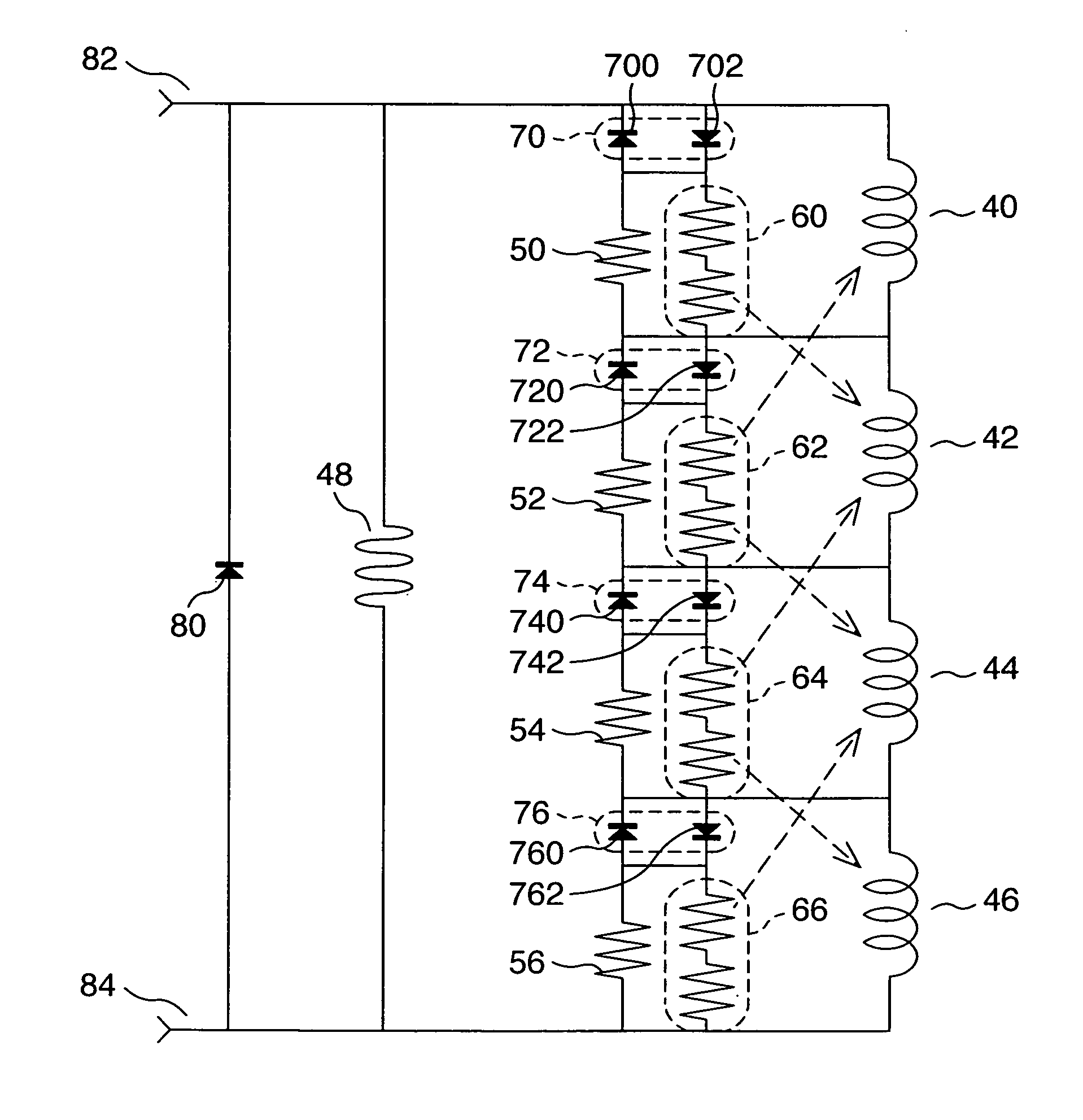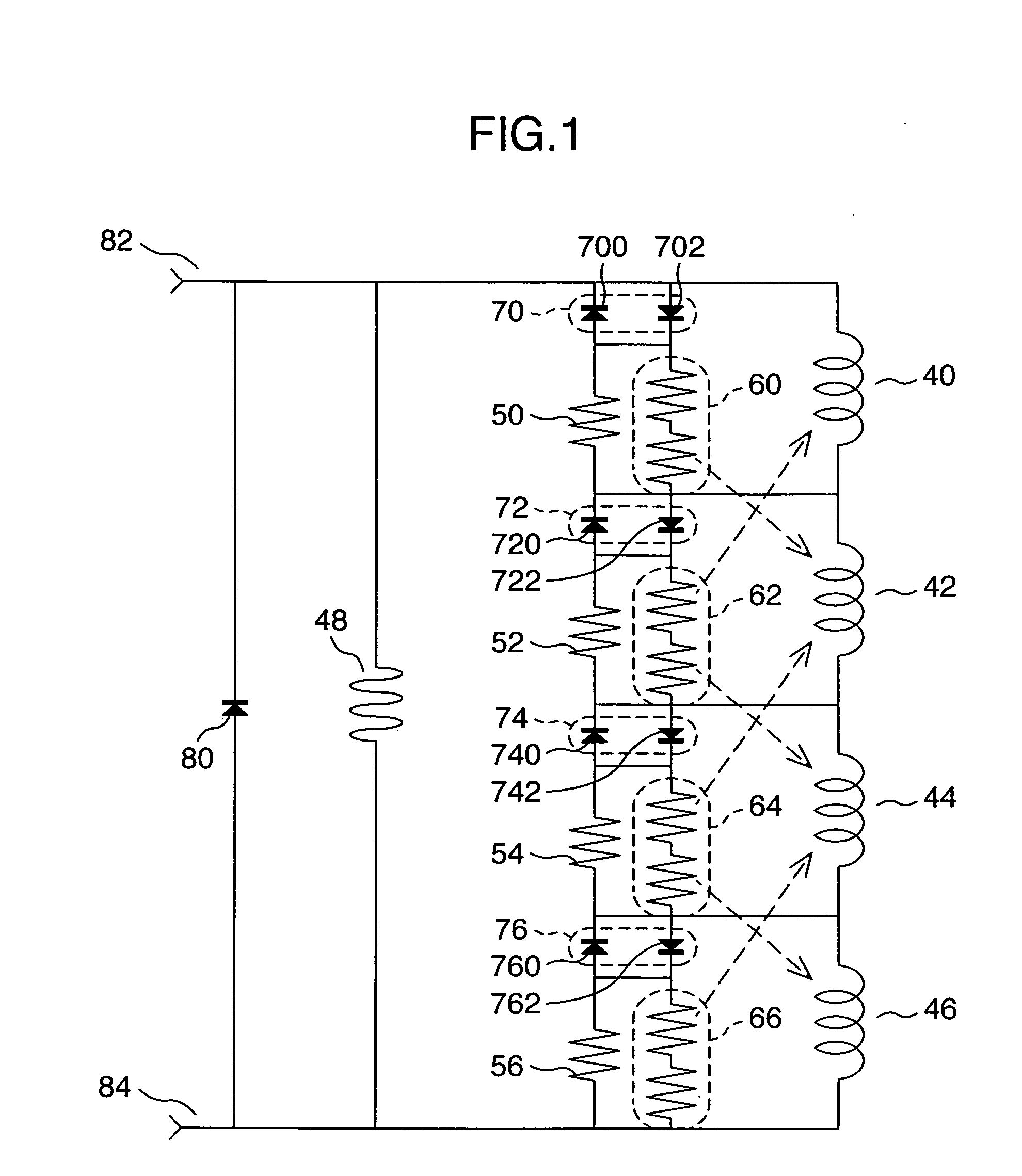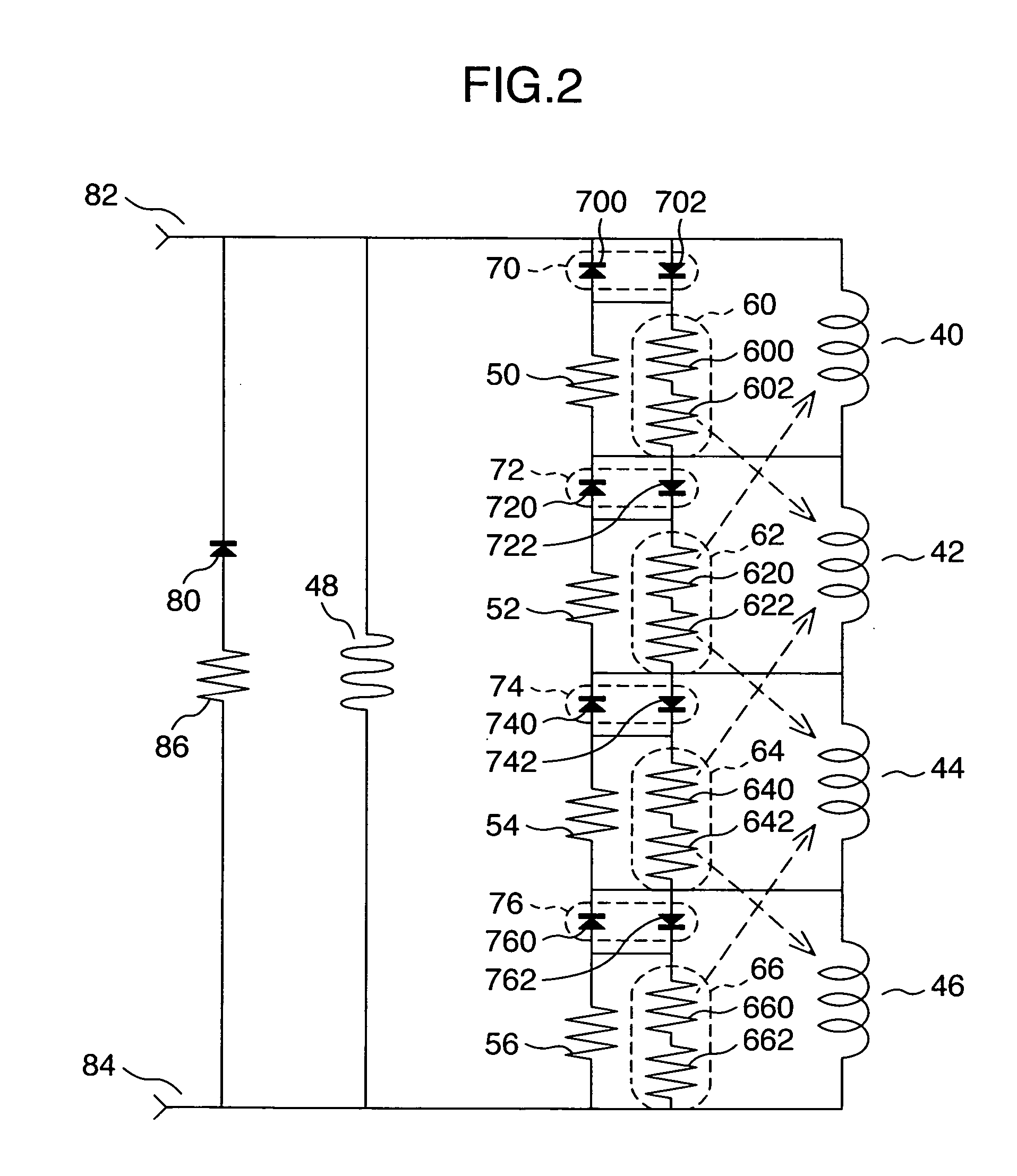Superconducting magnet system with quench protection circuit
a superconducting magnet and protection circuit technology, applied in emergency protection circuit arrangements, emergency protection arrangements for limiting excess voltage/current, electric devices, etc., can solve the problems of superconducting coils being burned, superconducting coils not being protected independently and passively, diodes or thyristors in quench protection circuits can not only improve quench protection performance, and reduce heat loss. , to achieve the effect of improving quench protection performance and reducing heat loss
- Summary
- Abstract
- Description
- Claims
- Application Information
AI Technical Summary
Benefits of technology
Problems solved by technology
Method used
Image
Examples
embodiment 1
(Embodiment 1)
[0018]FIG. 1 shows a circuitry as one embodiment of this invention. This is a protection circuit for a multilayer coil made up of four coils and for a persistent current switch. Series-connected four superconducting coils 40, 42, 44, 46 and a persistent current switch 48 are connected in parallel, forming a main circuit. Shunt resistors 50, 52, 54, 56 are connected in parallel with the associated superconducting coils 40 to 46 to form divided protection circuits.
[0019] Resistive heaters 60, 62, 64, 66 are each made up of two unit heaters 600, 602, 620, 622, 640, 642, 660, 662 that are matched to the adjoining superconducting coils 40 to 46 as indicated by dashed arrows. That is, unit heater resistors 620, 622 connected in series with each other to form the heater resistor 62 heat different superconducting coils 40, 44 located nearby as indicated by dashed arrows. Other heater resistors 60, 64, 66 are also arranged in a similar manner to the heater resistor 62.
[0020] ...
embodiment 2
(Embodiment 2)
[0025]FIG. 2 shows a protection resistor 86 connected in series with the diode 80 applied to the protection circuit of the persistent current switch 2 in the circuit of FIG. 1. Like reference numbers denote the identical components of FIG. 1 and their explanations are omitted. While in FIG. 1 the energy stored in the persistent current circuit is recovered by the diode 80 in the event of the quench of the persistent current switch 48, this embodiment can recover the energy by the resistor 86 in addition to the diode 80. It is therefore possible to recover a greater amount of energy in a shorter period of time.
embodiment 3
(Embodiment 3)
[0026]FIG. 3 is a circuitry in which the diode 80 applied to the protection circuit of the persistent current switch 48 in FIG. 1 is replaced with a bidirectional diode 88 made up of unit diodes 880, 882. Like reference numerals denote the identical components of FIG. 1 and their explanations are omitted. The provision of the bidirectional diode 88 in this embodiment obviates the need to consider the polarity at time of excitation and deexcitation and thereby improves the ease of use. When the energy to be recovered is large or the time to recover the energy is reduced, protective resistors 90, 92 may be connected in series with the bidirectional diode 88 as in the embodiment 2 of FIG. 2.
[0027] Since this invention can realize easy-to-design protection circuits with high level of safety for superconducting coils and for a persistent current switch, it can be applied to NMR (nuclear magnetic resonance) and MRI (magnetic resonance imaging) equipment made up of a plurali...
PUM
 Login to View More
Login to View More Abstract
Description
Claims
Application Information
 Login to View More
Login to View More - R&D
- Intellectual Property
- Life Sciences
- Materials
- Tech Scout
- Unparalleled Data Quality
- Higher Quality Content
- 60% Fewer Hallucinations
Browse by: Latest US Patents, China's latest patents, Technical Efficacy Thesaurus, Application Domain, Technology Topic, Popular Technical Reports.
© 2025 PatSnap. All rights reserved.Legal|Privacy policy|Modern Slavery Act Transparency Statement|Sitemap|About US| Contact US: help@patsnap.com



